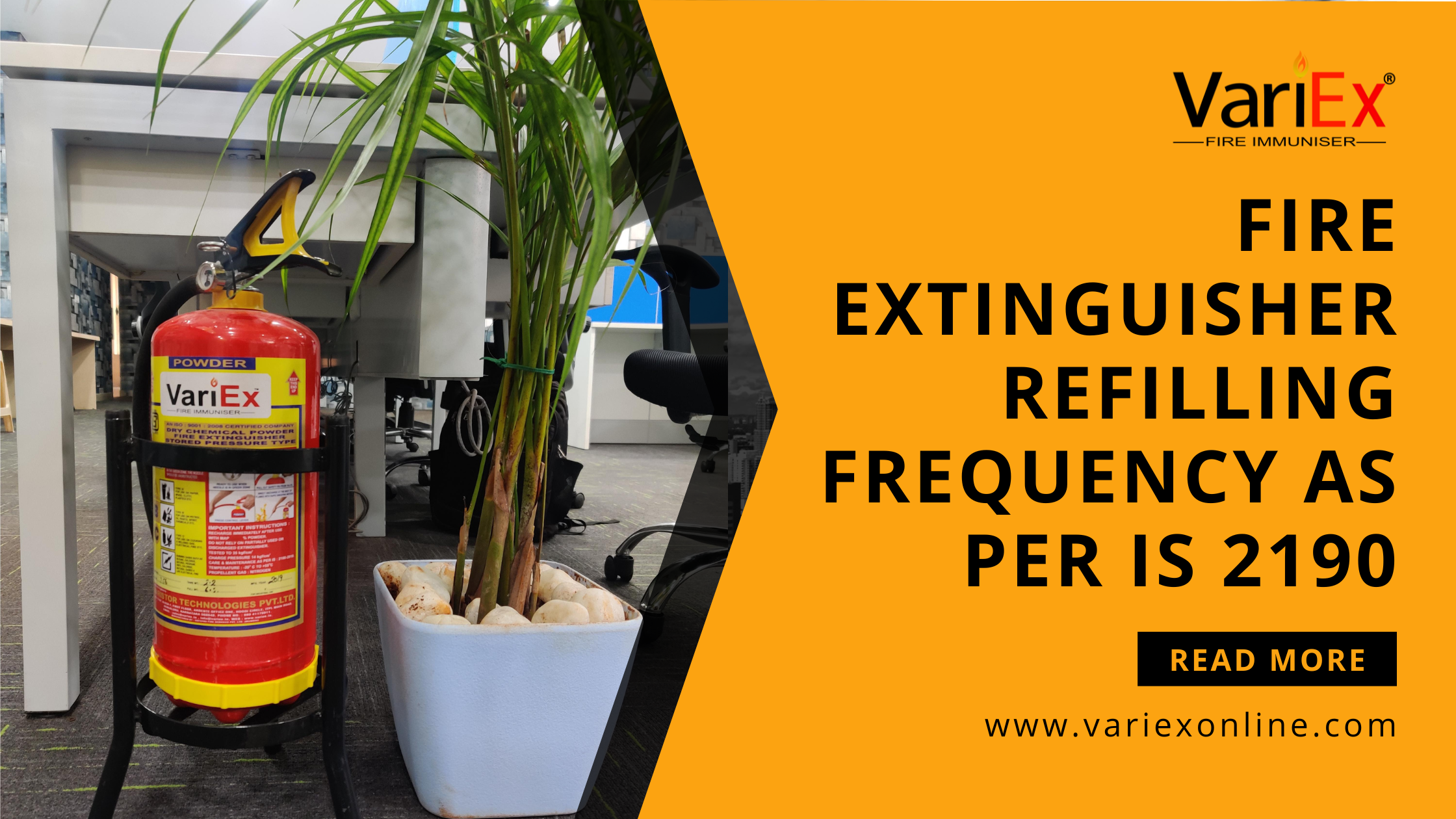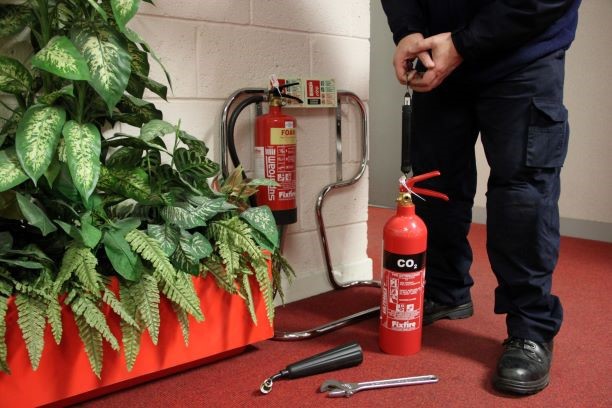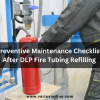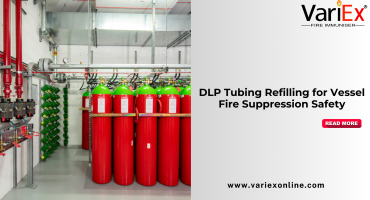![]()
Fire Immuniser
+91-7829629111
Email: info@variex.in
Varistor Technologies Pvt. Ltd.
Block-1, First Floor, Ardente Office One, Hoodi Circle, ITPL Main Road, Bengaluru, Karnataka 560048, IN
Fire Extinguisher Refilling Frequency As Per Is 2190
Fire extinguishers are essential safety devices that every building should have to protect against the risk of fire. However, simply having a fire extinguisher is not enough; it is equally important to ensure that it is always in proper working condition. One crucial aspect of fire extinguisher maintenance is refilling them at regular intervals. This article will explore the frequency of fire extinguisher refilling as per the guidelines provided by IS 2190, a standard set by the Bureau of Indian Standards (BIS).
Understanding IS 2190
IS 2190 is a set of guidelines established by BIS that specifies the requirements for the maintenance, inspection, and refilling of fire extinguishers. Following these guidelines ensures that fire extinguishers are always ready to combat fires effectively. The frequency of refilling fire extinguishers depends on several factors, including the type of extinguisher, its capacity, and the environment in which it is used.
Determining the Frequency of Refilling
The frequency of fire extinguisher refilling is determined based on the concept of "service pressure." Service pressure refers to the internal pressure that a fire extinguisher should maintain to function correctly. According to IS 2190, fire extinguishers must be refilled when their service pressure drops below a certain level. This level varies depending on the type of extinguisher.
Importance of Regular Refilling
Why is Refilling Necessary?
Fire extinguishers, over time, can lose their pressure or the extinguishing agent may degrade, settle, or leak. Regular refilling ensures that the extinguisher is fully charged and the extinguishing agent is in optimal condition. This is crucial for the extinguisher to operate effectively when needed.
Consequences of Neglecting Refilling
Neglecting regular refilling can lead to several issues:
- Reduced Effectiveness: An extinguisher with low pressure or degraded agent may not effectively control or extinguish a fire.
- Safety Risks: Inoperative extinguishers can result in increased risk to life and property in case of a fire.
- Non-Compliance: Failure to adhere to maintenance standards can lead to non-compliance with safety regulations, potentially resulting in legal and financial penalties.
Types of Fire Extinguishers and Refilling Frequency
1. Water and Foam Fire Extinguishers: Water and foam extinguishers are commonly used in many buildings. According to IS 2190, these extinguishers have a refill requirement when their service pressure drops below 15% of the maximum allowable pressure. It is recommended to refill these extinguishers at least once every years to ensure their optimum functionality.
2. Carbon Dioxide (CO2) Fire Extinguishers: CO2 fire extinguishers are typically used in places where the risk of electrical fires is high. IS 2190 states that CO2 extinguishers should be refilled if their service pressure falls below 5% of the maximum allowable pressure. To maintain their effectiveness, CO2 fire extinguishers should be refilled every 2 years.
3. Dry Powder Fire Extinguishers: Dry powder extinguishers are versatile and can be used for different types of fires. IS 2190 mandates refilling dry powder extinguishers when their service pressure drops below 10% of the maximum allowable pressure. It is advisable to refill these extinguishers every one years to ensure their reliability.
Factors Influencing Refilling Frequency
Apart from the type of fire extinguisher, several other factors can influence the frequency of refilling. These factors include the environment in which the extinguisher is located, the exposure to extreme temperatures, and the possibility of accidental damages. In certain situations, it may be necessary to refill fire extinguishers more frequently to ensure their readiness in case of emergencies.
Importance of Timely Refilling
Timely refilling of fire extinguishers is of paramount importance to maintain effective fire safety. Neglecting the recommended refilling frequency may result in malfunctioning equipment that could fail in the event of a fire. When a fire extinguisher is not refilled promptly, its pressure may drop, diminishing its ability to dispense the extinguishing agent effectively. This can have severe consequences in emergency situations when every second counts.
Procedures for Refilling
Steps Involved in Refilling a Fire Extinguisher
- Inspection: Before refilling, a thorough inspection of the extinguisher is necessary to check for any visible damage, corrosion, or wear and tear. The pressure gauge should be checked to ensure it is within the operational range.
- Discharge: The extinguisher is discharged to empty any remaining extinguishing agent. This step ensures that the extinguisher is completely empty before refilling.
- Cleaning: The extinguisher is cleaned to remove any residue or contaminants. This is crucial for ensuring the new extinguishing agent remains effective and uncontaminated.
- Refilling: The extinguisher is refilled with the appropriate type and quantity of extinguishing agent. The agent must comply with the specifications outlined in IS 2190.
- Re-Pressurization: After refilling, the extinguisher is re-pressurized to the recommended pressure level. This ensures that it will discharge effectively when used.
- Sealing and Tagging: Once refilled and re-pressurized, the extinguisher is sealed and a maintenance tag is attached. The tag includes details such as the date of refilling, the next due date, and the technician’s identification.
Best Practices for Refilling
Choosing the Right Service Provider
- Certification and Training: Ensure that the service provider is certified and their technicians are trained as per IS 2190 standards. This guarantees that the refilling is done correctly and safely.
- Reputation and Reviews: Look for a service provider with a good reputation and positive reviews. Reliable providers are more likely to adhere to safety standards and deliver quality service.
Regular Maintenance Checks
- Monthly Visual Inspections: Conduct monthly visual inspections to check for any signs of damage, corrosion, or pressure loss. These checks help identify issues early and ensure timely refilling.
- Annual Professional Inspections: Schedule annual inspections by certified professionals. They will perform a more thorough check and ensure that all maintenance and refilling requirements are met.
Legal and Safety Considerations
Compliance with Regulations
- Adherence to IS 2190: Compliance with IS 2190 is mandatory for ensuring the safety and effectiveness of fire extinguishers. Adhering to these standards helps avoid legal penalties and ensures readiness in case of a fire.
- Local Regulations: In addition to IS 2190, be aware of any local regulations that may impose additional requirements for fire extinguisher maintenance and refilling.
Training and Awareness
- Staff Training: Ensure that all staff members are trained in the proper use and maintenance of fire extinguishers. This includes knowing how to check pressure gauges, identify signs of damage, and understand the refilling schedule.
- Emergency Preparedness: Regularly conduct fire drills and ensure that everyone knows the location of fire extinguishers and how to use them. This enhances overall safety and preparedness.
Advanced Technologies in Fire Extinguisher Maintenance
Digital Monitoring Systems
- Pressure Sensors: Advanced fire extinguishers can be equipped with digital pressure sensors that provide real-time monitoring of pressure levels. Alerts can be sent if the pressure drops below the recommended level.
- Maintenance Tracking: Digital systems can track maintenance schedules and automatically notify when refilling or inspections are due. This helps ensure timely compliance with IS 2190 standards.
Internet of Things (IoT) Integration
- Remote Monitoring: IoT-enabled fire extinguishers can be monitored remotely, providing data on their status and alerting to any issues. This technology enhances maintenance efficiency and ensures readiness.
Case Studies and Real-World Examples
Successful Implementation of IS 2190 Guidelines
Case Study 1: Corporate Office Building
- A corporate office building implemented a comprehensive fire extinguisher maintenance program adhering to IS 2190 standards. Monthly visual inspections and biannual professional refilling ensured that all extinguishers were operational. In a small fire incident, the quick and effective use of a properly maintained extinguisher prevented significant damage.
Case Study 2: Manufacturing Facility
- A manufacturing facility faced several fire safety challenges due to the nature of its operations. By adhering to IS 2190 and using advanced digital monitoring systems, the facility maintained its extinguishers in optimal condition. This proactive approach minimized fire-related risks and ensured compliance with safety regulations.
Conclusion
Regular refilling of fire extinguishers as per IS 2190 guidelines is crucial for maintaining optimal fire safety. The refilling frequency depends on the type of extinguisher and its service pressure requirements. Neglecting to refill fire extinguishers promptly may leave a building vulnerable to fire incidents. It is essential to prioritize fire extinguisher maintenance and ensure that they are always in proper working condition. By following the recommended refilling frequency, property owners and occupants can minimize potential fire risks and create a safer environment.
Frequently Asked Questions (FAQs)
IS 2190 is the Indian Standard that specifies guidelines for the maintenance and refilling of fire extinguishers.
Refilling ensures that the fire extinguisher is fully charged and operational in case of emergencies. Over time, extinguishers can lose pressure or their contents may settle, necessitating refilling to maintain effectiveness.
Fire extinguishers should be refilled at least once every two years, as per IS 2190 guidelines. This interval helps ensure that the extinguisher remains fully charged and functional.
Yes, certain types of fire extinguishers may require more frequent refilling. For example, extinguishers with pressurized water or foam may need annual refilling to maintain effectiveness.
Regular inspections can help determine if a fire extinguisher needs refilling. Signs include a gauge reading below the recommended pressure levels, visible damage, or if it has been used partially or completely.
Fire extinguishers should only be refilled by trained personnel or certified agencies that comply with IS 2190 standards to ensure safety and effectiveness.
During refilling, the extinguisher is emptied of any remaining contents, inspected for damage, and refilled with the appropriate extinguishing agent. The pressure is then checked and adjusted as necessary before sealing.
No, refilling refers specifically to replenishing the extinguishing agent and ensuring pressure levels are adequate. Maintenance involves a broader inspection and testing regimen to ensure the entire extinguisher is operational.
Final Say
We at VariEx.in or Variexonline.com have mastered the art of designing, installing, inspecting, and fixing automatic sprinkler systems with the help of our in-house team, which is capable of delivering the fire sprinkler services you need, whether large or small and at affordable cost.
To schedule a fire sprinkler installation, or you think our services could benefit your commercial property, contact us online or give us a call at, 7829629111
"WHAT YOU CAN READ NEXT"
 Read more +24 November 2023 in Fire Extinguisher
Read more +24 November 2023 in Fire ExtinguisherWhat types of fire extinguishers are available for different fire classes?
 Read more +11 July 2025 in Fire Suppression
Read more +11 July 2025 in Fire Suppression








